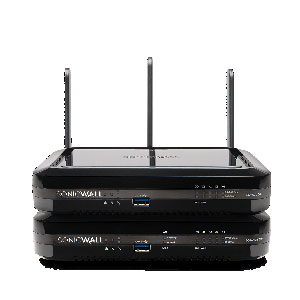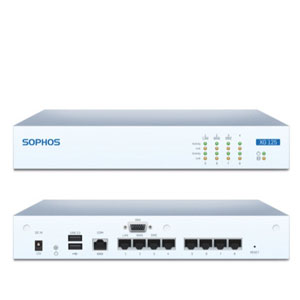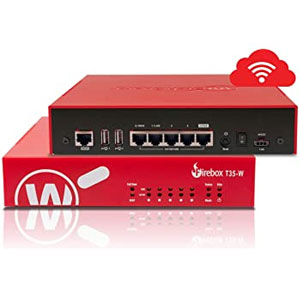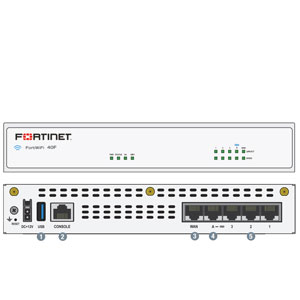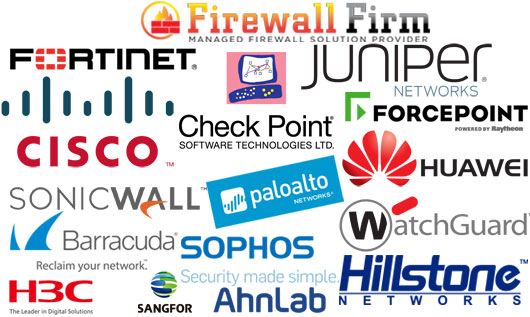
Best Firewall Review & Buyers Guide
Best Firewall Review & Buyers Guide
Firewall Firm’s Firewall Directory consolidates Best Firewall Review & Buyers Guide individual reviews of the best hardware and software firewalls available in the market today. But because we understand that there are lots of firewall solutions out there, we also provide you with a comprehensive guide on how to choose and buy the right one based on your budget and requirements.
We don’t only give you advice. We actually lead you straight to where you can get the ideal software or hardware firewall for your home or business needs. Firewall Guide is your one-stop destination — from planning to actually buying the right firewall solution for you.
What Is A Firewall?
Network firewall security or firewall for short refers to a network security system. It tracks and manages incoming and outgoing traffic in a network infrastructure. With a set of security protocols and firewall settings, a firewall serves as a fence. It’s a boundary between a trusted internal network from untrusted external channels.
Why You Should Get A Firewall?
The areas of 5G, artificial intelligence (AI), and Internet of things (IoT) continue to grow. But cybercriminals are also using these technologies to enhance their security breach approaches. They aim at your personal data and hard-earned money.
The full rollout of 5G in 2020 skyrockets the adoption of more IoT devices in homes and offices. More devices get linked to networks and the Internet. Unfortunately, cybercriminals can exploit any of these to penetrate internal networks. Also, new zero-day exploits can work with AI-enabled systems. This allows cybercriminals to strike in spots where entities are not prepared to defend.
These trends call for the necessity of having a more sophisticated firewall. A firewall that can respond and block today’s wave of threats . Through this ultimate guide, we’ll help you choose the right firewall solution that you should install for your home and organization.
What Are Software Firewalls?
are applications that you install on your device. Operating systems come with built-in software firewalls. There is a Linux firewall, Mac firewall , Windows firewall , and Ubuntu firewall. The latest version of Windows OS comes with Windows 10 firewall . While Android doesn’t have a native firewall, many Android firewall options are available for download. Third-party software firewalls can also be installed on other OSes as well.
Equipped with more advanced features, software firewalls provide greater granularity of control. They can filter all traffic, including encrypted ones like HTTPS. These firewalls analyze data based on content including keywords.
Outside operating systems, software firewalls come as a built-in feature among third-party applications known as Internet security suites. Apart from integrating a software firewall, these Internet security suites come with other features like antivirus or antimalware, quarantine, and safe browsing for online banking and shopping.
Comparison Of The Best-selling Software Firewall Vendors & Solutions
Best Firewall Review & Buyers Guide
Choose among our lists of software firewalls according to your requirements and budget.
Sophos Antivirus End Point Protection For Client
|
||
| Central End Point Protection Anti Virus For 1 Year |
Rs. 1150 + 18% GST |  |
| Central End Point Protection Anti Virus For 3 Year |
Rs. 2,300 + 18% GST |  |
| Central End Point Intercept X Ransomware Protection for 1 Year |
Rs. 1500 + 18% GST |  |
| Central End Point Intercept X Ransomware Protection for 3 Year |
Rs. 3000 + 18% GST |  |
Sophos Antivirus End Point Protection For Servers |
||
| Central End Point Intercept X Advance with Ransomware Protection for Server, 1 Year |
Rs. 12000 + 18% GST |  |
What Are Hardware Firewalls?
are like routers but with more features. Today, many routers integrate a hardware firewall. Still, they lack the features of true hardware firewalls. Hardware firewalls are placed in between the modem and the router. They act as a barrier between the internal network and the Internet, filtering the packets.
While software firewalls, whether they are built inside the operating system or an additional feature of an Internet security suite, work on individual operating systems and devices, hardware firewalls work on an entire network. Hence, having a software firewall and a hardware firewall provide you multiple layers of protection from different forms of cyber threats.
Comparison Of The 4 Best-selling Hardware Firewall Vendors & Solutions
Best Firewall Review & Buyers Guide
Choose among our lists of hardware firewalls according to your requirements and budget.
Security must be integral, not an afterthought. There is no business that is 100% safe from cyber threats in today’s world. Cybersecurity should be a constant concern for businesses of all sizes. From the smallest family-owned store to the biggest multi-national conglomerates,
Firewall: A Brief History
The growth of computers and the Internet in the 1980s led to the use of firewalls in network technology. The earliest forms of hardware firewall were the routers employed in that era. Separating networks from one another, they prevented the spread of problems among them. These firewall hardware routers served as first cybersecurity solutions.
1st
Generation Firewalls
In 1988, the first paper on firewall technology surfaced. Digital Equipment Corporation (DEC) engineers developed packet filter firewalls. Bill Cheswick and Steve Bellovin of AT&T Bell Labs focused on packet filter research. They came up with a working solution for the company.
2nd
Generation Firewalls
AT&T Bell Labs employees Dave Presotto, Janardan Sharma, and Kshitij Nigam worked on the next wave of firewalls from 1989 to 1990. Called as circuit-level gateways, these firewall hardware solutions still do their predecessors’ functions. They can remember the communications between endpoints as well.
But this type of firewall can be vulnerable to denial-of-service (DoS) attacks. Cybercriminals do this by bombarding the firewall with false connections. Doing so overwhelms the firewall’s connection state memory.
3rd
Generation Firewalls
In 1993, Wei Xu, Peter Churchyard, and Marcus Ranum came up with a software or application firewall. They called it Firewall Toolkit (FWTK). This served as the foundation of Trusted Information Systems’ Gauntlet firewall.
Application layer filters can recognize applications and protocols. These include Domain Name System (DNS), File Transfer Protocol (FTP), and Hypertext Transfer Protocol (HTTP). This type of firewall uses this feature to detect any rogue app or service that tries to go past the firewall.
Next Generation Firewalls
Next generation firewall (NGFW) surfaced in 2012. This type of firewall performs a deeper or wider inspection at the application layer. Current firewalls feature intrusion prevention systems (IPS), web application firewall (WAF), and user identity management integration.
Thirty years of firewall technology’s development resulted in the many types and brands that you can choose from.
Types of Firewalls
Firewalls fall into either of these two categories: network-based firewall or host-based firewall. Network-based firewalls sift traffic between two or more networks on network hardware. Meanwhile, host-based firewalls run on host computers and handle network traffic on them.
Packet Filters
Packet filters or network layer firewalls are the first reported kind of firewalls. These firewalls inspect the packets transferred among computers. Packet filters operate at the low level of the TCP/IP stack. They can reject and notify the sender when the packet does not match the admin’s firewall rules.
Packets are filtered by source and destination network addresses, port numbers, and protocol. Network layer firewalls fall into two sub-categories: stateful and stateless. Most packet filters are classified as an open source firewall.
Stateful Firewalls vs Stateless Firewalls
Stateful firewalls track the operating state and properties of network connections. They can recognize network packets and let those that match a known active connection pass.
Meanwhile, stateless firewalls protect networks based on static information. They filter packets based on the individual packets alone. Compared to stateful firewalls, stateless firewalls are less rigorous. They cannot observe the general pattern of incoming packets. Patterns are essential when blocking larger attacks beyond the individual packet level.
Application Layers
This type of firewall runs on the TCP/IP stack’s application level. It intercepts all packets coming in and going out among applications. Application firewalls attach to socket calls. Thus, they are also known as socket filters. They regulate the link between the application layer and the lower layers of the OSI (Open Systems Interconnection) model.
Application firewalls perform like packet filters. But their filtering works on a per-process basis instead of a per-port basis. This per-process approach has limited efficacy. They cannot filter every potential connection that may happen with other processes. This approach cannot defend against a process modification like a memory corruption exploit.
Considering these vulnerabilities, application firewalls, new generation application firewalls emerged. These rely on mandatory access control (MAC) or sandboxing to protect vulnerable services.
Proxy Servers
Proxy servers work as a firewall by addressing input packets while blocking other packets. Proxy servers serve as a gateway from one network to another. They do it for a specific network application and function as a proxy on behalf of a user in the network.
Proxy servers make tampering with an internal network from an external one harder. An internal anomaly does not mean a security breach that external elements can use. Still, cybercriminals may try to pass packets to an internal network by IP spoofing.
NAT Functionality
Firewalls’ network address translation (NAT) functionality works to hide computers’ true addresses. NAT function resolves the limited IPv4 routable addresses available for individuals or organizations. This reduces the cost of getting public addresses for each computer in a company. NAT functionality’s ability to hide addresses protects devices against network vulnerabilities.
What Are The Possible Firewall Attacks?
If you are concerned about the attacks directed against your network firewall, then it is a must that you know the different types of cybersecurity threats out there. Here are some of them:
Denial-of-service
SQL Injection
Spoofing
Man-in-the-middle
What A Firewall Can Do?
Network firewalls work to avoid illegal access to and from a network. Firewalls do this by checking the packets and content traversing in and out across the network.
Cybersecurity threats have become more sophisticated over the years. Likewise, firewalls have also evolved in order to deal with these threats. Many of today’s firewall solutions combine the features and characteristics of previous-generation firewalls to become more effective.
Current firewalls may come with a packet layer, circuit layer, application layer, and a proxy server. With these features, firewalls now serve as a gateway defense, execute security protocols, play as a midway between your network and the Internet, keep your internal network addresses covert, and notify you about threats.
What A Firewall Cannot Do?
While modern firewalls are endowed with many features, cybercriminals are always one step ahead in creating more sophisticated cyber threats. Your firewall might not be enough to keep your network protected against these risks. But apart from these threats, there are other breach elements that even the most advanced firewalls cannot thwart when they take place.
Surprisingly, firewalls cannot protect your network from attacks caused by elements within, particularly network users.
That said, you must equip your network with an intrusion detection and prevention mechanism.
People who have mastered social engineering can also trick network users to hand over confidential data. These transactions are beyond firewalls’ control. Software-wise, operating systems, another internal element within a network, can be subject to flaws and vulnerabilities. These can be exploited by cybercriminals and cannot be controlled by firewalls. Keeping your network’s operating systems and applications updated with patches can resolve this concern.
How To Test A Firewall?
Firewall testing ensures that the hardware firewall, whether provided by a dedicated hardware firewall appliance,
, or a
performs. Many test sites go live on the Internet, but you must be quite questioning about which of them to depend on. Putting your trust on a testing site provided by a company that sells hardware firewalls and routers is not recommended. Firewall testing makes sure that your hardware firewall executes its purpose and that you have activated its settings the right way.
may be offered as proprietary or brand-exclusive. On the other hand, there are firewall testing utilities that users can download online or can be run on the website for free. The testing checklist of these tools, whether exclusive or non-proprietary, focus on efficacy and look at some parameters like malware detection, application identification, and intrusion prevention.
Free firewall testing sites serve as open-source alternatives for performance evaluation while linked to the Internet. Downloading is not necessary as they do not require software installation. Do note that some setups may require a testbed rammed against a null device like a router with settings that simulate a real-world scenario.
Should you need to learn more about these downloadable and web-based firewall testing tools, check out
.
Firewall FAQs
Given the vast selection of firewall and cybersecurity options available in the market today to combat online threats, both home and business users raise many questions before they choose and buy an online defense for their network infrastructure. In this section, we have compiled some of the most commonly asked questions by consumers, including you, with the answers that we hope will guide you toward the right firewall and cybersecurity solutions according to your network requirements.
QDo Firewalls Stop Viruses?
A Hardware firewalls alone cannot stop viruses and other forms of malware like adware, spyware, Trojan horses, and worms penetrating your network and the devices within it. Software solutions that address these types of cybersecurity threats are more popularly known as antiviruses but can also be called as antimalware programs. Other variants of antimalware software solutions include anti-spyware, anti-Trojan, Internet security suites. Another security software that you might want to install and run on your devices is a software firewall which can be a standalone software package or an added feature.
While hardware firewalls provide protection for the entire network, these antimalware software solutions go to the operating system level to shield individual devices against online threats. Equipped with an automatic update feature and artificial intelligence (AI), antiviruses and other antimalware applications can determine programs and services running on your devices have the potential to cause harm even before they go rogue. These security solutions come with other features like antispam, file shredder, portable storage device scanner, private browsing, and theft protection.
To learn more about the features and functionalities these software solutions offer, as well as choose and buy among the best-selling options, check out our special sections for
, , , , and
.
QCan I Get A Firewall For Free?
A Hardware firewall appliances do not come for free but software firewalls may come for free as a trialware, freeware, or a bundled feature within another security software. Trialware versions of antivirus, anti-spyware, anti-Trojan, and Internet security software applications offer a free firewall that can last only for a certain number of days (usually up to 30 days or one month).
Trialware gives you an opportunity or enough time if the security software and its built-in firewall complement with your home or business network’s requisites. Once the trial period expires, you have an option to continue using the software through a paid subscription or uninstall it if dissatisfied. Should you decide to pay and proceed using the security software, it means that you also paid for the built-in software firewall as a bundled feature. The same concept goes with Microsoft Windows and Apple macOS. These paid operating systems carry an integrated firewall as a feature, namely
and
.
On the other hand, standalone free software firewall solutions can be downloaded as freeware from the Internet as well. Like their paid subscription-based counterparts, these free security software solutions also come with sophisticated features that can stop existing and emerging cybersecurity threats from penetrating your device. Whether it is for personal device security, business, or enterprise, you can have state-of-the-art protection at no cost with these free firewall solutions.
Despite their non-subscription nature, free software firewall options offer you the ease of usage and real-time protection against online threats with anti-phishing and automatic update features. They can go well with your device’s operating system without causing it to run sluggishly and hogging its resources. If you want to know these free firewall software that you may download and install on your device, read our review of some of the
.
QIs A Firewall A Router?
A Depending on the configuration, a hardware firewall can double as a router and a router, whether it is a wired router or a wireless router, can double as a hardware firewall. Hardware firewalls work like network routers but with more security features. In a traditional network setup, network administrators put hardware firewalls in between the modem and the router. These network devices work as a barrier between the internal network and the Internet, filtering the packets.
During the first days of the Internet, routers were employed as hardware firewalls. Today, network routers integrate a firewall into their network management console. Although they do not provide wireless connectivity, wired routers work as an old-fashioned yet proven way to establish a network infrastructure with a stable high-speed Internet connection without compromising tough security.
Likewise, wireless routers also adopt the security features of hardware firewalls and wired routers. While wireless routers offer a more convenient means to deploy high speed Internet access, wireless network setups can be more susceptible to cybersecurity attacks than wired network environments.
If you need a secure networking device for your home or business setup, read our reviews and buyers guide of some of the best and most secure
, , and
.
Conclusion
Individuals and, more importantly, organizations tend to pick multiple firewalls and cybersecurity solutions from different vendors. Unfortunately, this strategy results in worse than better outcomes.
Different solutions from different vendors might not work well with one another. Some organizations even hire dedicated personnel or team just to make sure these contradicting solutions run properly. Logically, this brings additional costs to these organizations. In-between these incompatible solutions, vulnerabilities might arise which cybercriminals can exploit to cause harm to the network.
The Best Firewall Review & Buyers Guide helps in resolving this dilemma by providing in-depth insights on various firewalls and cybersecurity solutions and how-to guides when choosing one for home and business.
This guide also ensures that you get them from reliable sources by the time you buy. This guide helps you in making an informed, sound decision that eliminates the use of incompatible solutions, risks, and extra costs.

